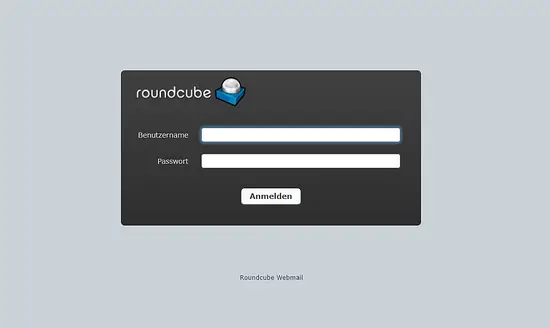Remove Samba Ubuntu 18.04
By default in Ubuntu 20.04, Gamemode is preinstalled, but it still needs to be enabled manually for games. For Steam, right click on the Properties of a game, click on SET LAUNCH OPTIONS. And then type the following: gamemoderun%command% Click OK, and then Close to apply. Ubuntu 16.04 LTS (Xenial Xerus) Ubuntu 16.10 (Yakkety Yak) Ubuntu 17.04 (Zesty Zapus) Ubuntu 17.10 (Artful Aardvark) Ubuntu 18.04 LTS (Bionic Beaver) Ubuntu 18.10 (Cosmic Cuttlefish) Ubuntu.
Objective
The objective is to configure basic Samba server to share user home directories as well as provide read-write anonymous access to selected directory.There are myriads of possible other Samba configurations, however the aim of this guide is to get you started with some basics which can be later expanded to implement more features to suit your needs.

Operating System and Software Versions
- Operating System: - Ubuntu 18.04 Bionic Beaver
- Software: - Samba Version 4.7.4-Ubuntu or higher
Requirements
Privileged access to your Ubuntu 18.04 Bionic Beaver will be required.Difficulty
MEDIUMConventions
- # - requires given linux commands to be executed with root privileges either directly as a root user or by use of
sudocommand - $ - requires given linux commands to be executed as a regular non-privileged user
Scenario
The below configuration procedure will assume a following scenario and pre-configured requirements:- Server and MS Windows client are located on the same network and no firewall is blocking any communication between the two
- MS Windows client can resolve samba server by hostname
ubuntu-samba - MS Windows client's Workgroup domain is
WORKGROUP
Instructions
Install Samba Server
Let's begin by installation of Samba server. This is rather a trivial task. First, installtasksel command if it s not available yet on your system. Once ready use tasksel to install Samba server. Configuration
We will be starting with a fresh clean configuration file, while we also keep the default config file as a backup for reference purposes. Execute the following linux commands to make a copy of an existing configuration file and create a new one:Subscribe to Linux Career NEWSLETTER and receive latest Linux news, jobs, career advice and tutorials.
Homes share
In this section we will be adding user home share directories into our new/etc/samba/smb.conf samba configuration file. Samba has its own user management system. However, any user existing on the samba user list must also exist within
/etc/passwd file. If your system user does not exist yet, hence cannot be located within /etc/passwd file, first create a new user using the useradd command before creating any new Samba user. Once your new system user eg. linuxconfig exits, use the smbpasswd command to create a new Samba user: Next, use your favorite text editor to edit our new /etc/samba/smb.conf samba configuration file: and add the following lines: Create Anonymous Share
In this section we will add a new publicly available read-write Samba share accessible by anonymous/guest users. First, create a directory you wish to share and change its access permission. Example: Next, add the following lines into Samba configuration file using your favorite text editorsudo nano /etc/samba/smb.conf: Your current Samba configuration file should look similar to the one below:Restart Samba Server
Our basic Samba server configuration is done. Remember to always restart your samba server, after any change has been done to/etc/samba/smb.conf configuration file: Once you restart your Samba server, confirm that all shares have been configured correctly: Optionally create some test files. Once we successfully mount our Samba shares, the below files should be available to our disposal: Lastly, confirm that your Samba server is up and running: Mount Samba Shares
At this stage we are ready to turn our attention to MS Windows. Mounting network drive directories might be slightly different for each MS Windows version. This guide uses MS Windows 7 in a role of a Samba client.Mount user Home Directory
To start, open up youWindows Explorer then right-click on Network and click on Map network drive.. tab. Select drive letter and type Samba share location. Make sure you tick Connect using different credentials if your username and password is different from the one created previously:Enter your Samba user name and password:
You should now have a read-write access to your user's home directory:
Mount Anonymous Samba Share
Similarly, mount your anonymous/guest Samba share. However this time no username and password will be required:Linux introductions, tips and tutorials. Any distro, any platform! Explicitly noob-friendly.If you're posting for help, please include the following details, so that we can help you more efficiently:. your operating system and version. the hardware you're using. Flavours 2 lite 224 full for mac 2017. a description of the problem. output that was displayed (if any)Questions are encouraged.
If you fix the problem yourself, please post your solution, so that others can also learn. NEW!There's a great - thanks to SCSweeps.Other subreddits you may like:Does this sidebar need an addition or correction? Hi all,Looking for some help. I just had some issues with my Plex Media Server and rather than trying to recover from a backup, I just created a new media server. Only issue is I can no longer mount a share from my Synology NAS.I've done this in the past on 16.04 by entering the share into fstab. The issue is now when I try to mount it through sudo mount -a, I get this message:Refer to the mount.cifs(8) manual page (e.g.
Man mount.cifs).Here's a copy of my fstab:UUID=d50381cb-0fef-4d8b-b081-32cb4dca638a / ext4 defaults 0 0/swap.img none swap sw 0 0/movies media/movies cifs credentials=/home/maph/maph.creds,uid=maph 0 0.